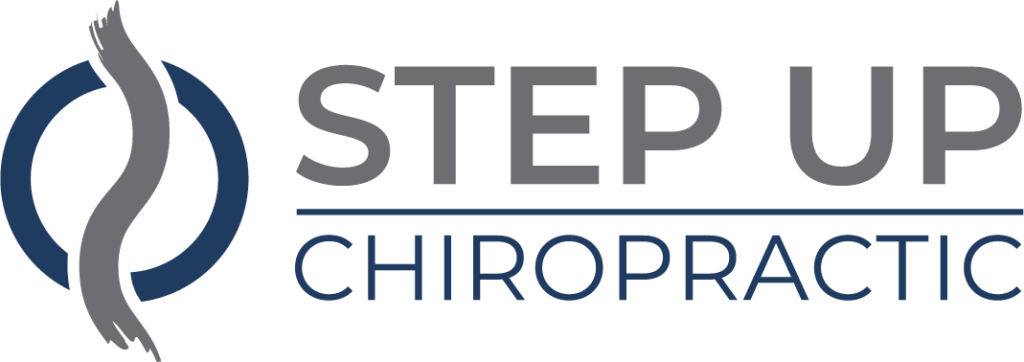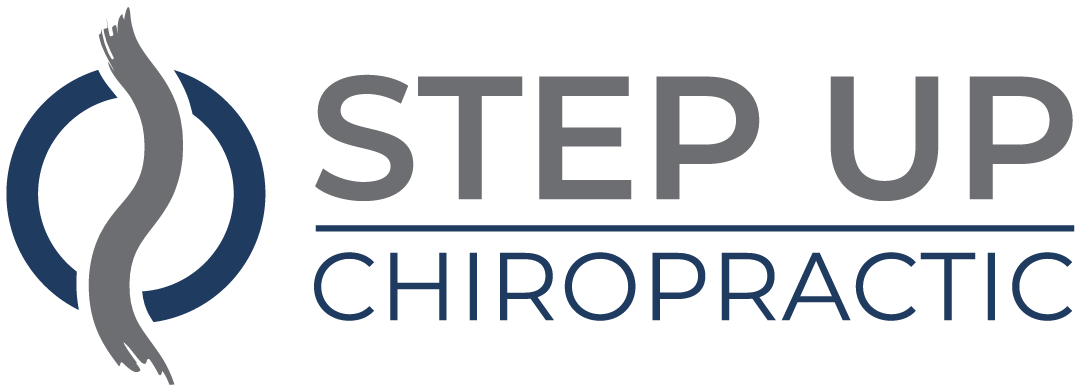To maximize your sports performance, you need to make precise adjustments in your training and lifestyle. It's not just about practicing harder; it's about evaluating where you currently stand and identifying specific areas for improvement. From setting measurable goals to optimizing your nutrition and recovery strategies, every detail counts. You might even find that the right technology can provide insights you hadn't considered. But what are the key adjustments that can truly elevate your game? Let's explore some critical strategies that could make all the difference.
Assess Your Current Performance
To maximize your sports performance, you first need to assess your current abilities. This step is essential because it sets the foundation for your improvement journey. Start by evaluating your strengths and weaknesses in your chosen sport. Are you fast, but lack endurance? Can you shoot accurately, but struggle with defense? Recognizing these aspects will help you identify areas that need focus.
Next, gather data on your performance metrics. This could include your sprint times, distances jumped or thrown, or even your scores in various drills. Use a stopwatch or a fitness tracker; the numbers will provide a clear picture of where you stand. Don't shy away from seeking feedback from coaches or peers. Their observations can reveal blind spots you mightn't notice.
Also, consider your mental game. How do you handle pressure during competitions? Are you confident, or do nerves get the best of you? Understanding your mental state is just as important as physical assessment. Reflect on your mindset during training and games, and note any patterns.
Lastly, document everything. Keep a journal of your assessments, noting not only the figures but also your feelings and insights. This record will be invaluable as you progress and adjust your training.
Set Specific Goals
Once you've assessed your current performance, the next step is to set specific goals that will guide your training and improvement. Specific goals provide clarity and direction, helping you focus on what you truly want to achieve. Instead of saying, "I want to get better," you might say, "I want to improve my sprint time by three seconds over the next two months." This level of specificity makes it easier to track progress and stay motivated.
When setting these goals, consider using the SMART criteria—making sure they're Specific, Measurable, Achievable, Relevant, and Time-bound. For instance, if you're a basketball player, instead of just aiming to "shoot better," set a goal to "increase my free throw percentage from 70% to 80% by the end of the season." This not only clarifies what you're working towards but also provides a tangible metric for success.
Don't forget to break larger goals into smaller, achievable milestones. If your ultimate goal is to complete a marathon, start by setting a goal to run a consistent number of miles each week. Celebrating these small wins keeps you motivated and builds your confidence.
Lastly, remember to review and adjust your goals as you progress. As you improve, your goals should evolve to challenge you further. Setting specific goals isn't just a way to track your performance; it's a powerful tool to maximize your potential in sports.
Optimize Training Techniques
Effective training techniques can greatly enhance your sports performance, helping you reach your goals more efficiently. To get started, focus on incorporating a variety of training methods that challenge your body in different ways. This variety not only prevents boredom but also stimulates muscle growth and improves overall fitness.
Begin by evaluating your current performance level and identifying areas for improvement. Whether it's strength, endurance, speed, or agility, tailor your training regimen to target these specific needs. For instance, if you're aiming to improve your speed, integrate interval training into your routine. This involves alternating between high-intensity bursts and lower-intensity recovery periods, giving your body the chance to adapt and grow stronger.
Additionally, don't overlook the importance of rest and recovery. Your muscles need time to repair and grow after intense workouts, so schedule regular rest days and consider incorporating active recovery techniques like light jogging or stretching. It's during these recovery periods that you'll see significant progress.
Also, pay attention to your training environment. Surround yourself with supportive individuals who share your goals, as this can boost motivation and accountability. Utilize technology, such as fitness apps or wearables, to track your progress and adjust your workouts as needed.
Lastly, remain open to change. Regularly evaluate your training techniques to verify they align with your evolving goals. By optimizing your training methods, you'll not only enhance your performance but also enjoy the journey toward achieving your sports aspirations.
Revamp Your Nutrition
Revamping your nutrition is fundamental for maximizing sports performance and fueling your body effectively. To perform at your best, you need to focus on what you eat and how it impacts your energy levels, recovery, and overall health.
Start by evaluating your current diet and identify areas for improvement. Are you getting enough whole foods like fruits, vegetables, lean proteins, and whole grains?
Prioritize nutrient-dense foods that provide the vitamins and minerals essential for peak performance. Incorporate a variety of colorful fruits and vegetables to guarantee you're getting a broad spectrum of nutrients.
Lean proteins, such as chicken, fish, beans, and legumes, are crucial for muscle repair and growth. Don't forget healthy fats from sources like avocados, nuts, and olive oil, which help in hormone regulation and energy production.
Timing your meals is just as important. Fuel your body with a balanced meal or snack about 2-3 hours before your training. This way, you'll have the energy to push through your workouts.
Post-exercise, focus on consuming a mix of carbohydrates and proteins to replenish glycogen stores and support muscle recovery.
Hydration also plays a fundamental role in your nutrition strategy. Make sure you're drinking enough water throughout the day, especially before, during, and after exercise.
Keeping your body well-hydrated can greatly enhance your performance and recovery.
Incorporate Recovery Strategies
To truly maximize your sports performance, it's important to integrate effective recovery strategies into your routine. Recovery isn't just about resting; it's an active process that helps your body heal, rebuild, and prepare for the next challenge.
Start by prioritizing sleep. Aim for 7-9 hours of quality sleep each night, as this is when your body does most of its repair work. Consider establishing a bedtime routine that encourages relaxation, which can improve your sleep quality considerably.
Next, incorporate active recovery days into your training schedule. Light activities like walking, cycling, or yoga can promote blood flow, reduce muscle soreness, and prevent stiffness. This type of recovery keeps you moving without overexerting yourself.
Don't underestimate the power of hydration and nutrition. Proper hydration helps your muscles function optimally, while a well-balanced diet replenishes lost nutrients and aids in recovery. Focus on protein for muscle repair, healthy fats for energy, and plenty of fruits and veggies for vitamins and minerals.
Consider adding techniques like foam rolling or massage therapy to alleviate muscle tension and improve flexibility. These methods can enhance circulation and speed up recovery time.
Finally, listen to your body. If you're feeling fatigued or experiencing pain, don't hesitate to adjust your training intensity or take an extra rest day.
Focus on Mental Conditioning
To enhance your sports performance, focusing on mental conditioning is essential.
You can harness visualization techniques, practice mindfulness, and set clear goals to sharpen your competitive edge.
These strategies will help you stay focused and confident, both in training and during competition.
Visualization Techniques
Although physical training is essential for peak sports performance, mental conditioning through visualization techniques can markedly enhance your abilities. By practicing visualization, you create a mental rehearsal of your performance, allowing your mind to experience success before you step onto the field or court. This technique helps you build confidence, reduce anxiety, and improve focus.
Start by finding a quiet space where you won't be disturbed. Close your eyes and take a few deep breaths to relax. Picture yourself in your sport, imagining every detail—from your movements to the sounds around you. Visualize specific scenarios, like making a critical play or executing a perfect shot. The more vivid and detailed your mental images, the more effective this technique will be.
You should also incorporate positive affirmations during your visualization practice. Remind yourself of your strengths and past achievements. This combination of imagery and affirmations reinforces a winning mindset and prepares your brain for peak performance.
Regularly practicing visualization can make a significant difference in your actual performance. So, make it a part of your training regimen, and watch how it transforms your game.
Mindfulness Practices
Incorporating mindfulness practices into your training can greatly enhance your mental conditioning and overall sports performance. By focusing on the present moment, you can reduce anxiety and improve your concentration, allowing you to perform at your best.
Try dedicating a few minutes each day to mindfulness meditation. Sit in a quiet space, close your eyes, and focus on your breath. This simple practice helps clear your mind and sharpen your focus.
Another effective technique is body scanning, where you mentally check in with each part of your body. This practice increases awareness of physical sensations and helps you recognize tension, allowing you to release it before it affects your performance.
During training or competition, practice mindful awareness by concentrating on your movements and sensations. Pay attention to how your body feels as you execute skills, whether it's running, swimming, or shooting. This focus can help you stay grounded and make better decisions under pressure.
Finally, remember to practice gratitude. Reflecting on what you appreciate about your sport and your progress can boost your motivation and positivity.
Goal Setting Strategies
Setting clear and specific goals is essential for enhancing your mental conditioning and maximizing sports performance. When you know exactly what you want to achieve, it becomes easier to stay focused and motivated.
Start by breaking down larger objectives into smaller, manageable steps that you can realistically accomplish. This approach helps you maintain momentum and track your progress, reinforcing your commitment.
Here are a few strategies to reflect on:
- Visualize your success: Picture yourself achieving your goals; this mental imagery can enhance motivation and confidence.
- Set SMART goals: Make sure your goals are Specific, Measurable, Achievable, Relevant, and Time-bound. This structure keeps you accountable and on track.
- Celebrate milestones: Acknowledge your progress along the way. Celebrating small victories boosts your morale and keeps you engaged.
Utilize Technology and Analytics
To boost your sports performance, you need to embrace technology and analytics.
Performance tracking tools can give you insights into your strengths and weaknesses, while data-driven training techniques help you maximize your efforts.
Plus, injury prevention analytics can keep you on the field longer, ensuring you stay at the top of your game.
Performance Tracking Tools
Many athletes today leverage performance tracking tools to gain a competitive edge. These tools help you monitor your metrics and provide insights into your training, allowing you to make informed decisions about your performance.
Whether you're an amateur or a seasoned pro, incorporating technology into your regimen can elevate your game.
Imagine knowing exactly where you can improve and how to push past your limits. With the right tools, you can:
- Identify your weaknesses and turn them into strengths.
- Set measurable goals that keep you motivated and focused.
- Celebrate your progress as you witness tangible improvements.
From wearable devices that track your heart rate to apps that analyze your training sessions, these tools offer real-time feedback that's invaluable.
They help you understand how your body responds to different workouts, ensuring you train smarter, not harder. By regularly reviewing your performance data, you can tweak your routines and strategies, optimizing every practice and game.
Embrace these performance tracking tools, and you'll find yourself on a path to peak performance and continuous growth in your sport.
Data-Driven Training Techniques
Harnessing the power of technology and analytics can transform your training regimen into a finely tuned machine. By integrating data-driven techniques, you can identify your strengths and weaknesses more effectively. Wearable devices like fitness trackers and heart rate monitors provide real-time feedback, allowing you to optimize your workouts based on your body's responses.
Utilizing apps and software that analyze your performance metrics can reveal patterns in your training. This data helps you make informed adjustments, ensuring that you're not just training harder but smarter. For instance, if you notice your recovery times are lagging, you can modify your intensity or duration to enhance endurance without risking burnout.
Moreover, video analysis tools can help you refine your techniques. By reviewing footage of your performance, you can pinpoint areas for improvement that you mightn't notice in real-time. Engaging with your coach or trainer can amplify these insights, as they can interpret the data and provide targeted strategies tailored to your goals.
Incorporating these data-driven training techniques empowers you to push boundaries, maximizing your sports performance while minimizing guesswork. Embrace technology, and watch your athletic capabilities reach new heights.
Injury Prevention Analytics
Incorporating injury prevention analytics into your training routine can markedly reduce the risk of setbacks. By leveraging technology and data, you can identify potential injury risks before they become serious issues. This proactive approach not only helps you stay on the field but also enhances your overall performance.
Using wearable devices and performance-tracking software, you can monitor your biomechanics, workload, and recovery patterns. These insights allow you to adjust your training plans in real time, ensuring you're not pushing beyond your limits.
Imagine the peace of mind that comes from knowing you're prioritizing your health:
- Stay in the game longer: Avoiding injuries means you can train consistently and reach your goals.
- Boost your confidence: Knowing you're using analytics to protect yourself lets you focus on performance, not fear.
- Maximize your potential: When you're injury-free, you can push harder, train smarter, and achieve greatness.
Integrating these analytics into your routine isn't just smart; it's essential for any athlete committed to maximizing their performance and longevity in the sport.
Don't wait for an injury to take action—start using injury prevention analytics today!
Seek Professional Guidance
When it comes to enhancing your sports performance, seeking professional guidance can be a game changer. Coaches, trainers, and sports psychologists bring specialized knowledge that can help you refine your skills and improve your overall performance. They can identify your strengths and weaknesses, allowing you to focus your training on the areas that need the most attention.
Working with a professional provides you with personalized training plans tailored to your specific goals and abilities. Instead of following a generic program, you'll receive targeted strategies that can lead to faster improvements. Additionally, having someone to hold you accountable can keep you motivated, ensuring you stay committed to your training schedule.
Moreover, professionals can offer insights into injury prevention, helping you avoid common pitfalls that can derail your progress. They'll teach you proper techniques and recovery methods to help keep your body in peak condition. Their expertise can save you time and reduce the risk of injuries, allowing you to stay in the game longer.
Don't underestimate the value of mental coaching either. Sports psychologists can help you develop mental resilience, improve focus, and manage stress—key factors that often separate the good athletes from the great ones.
Ultimately, investing in professional guidance can accelerate your development, enhance your skills, and elevate your performance. So, take that step and find the right expert to help you reach your full potential.
Conclusion
To truly maximize your sports performance, embrace these strategic adjustments in your training and lifestyle. By evaluating your current abilities, setting clear goals, and optimizing your techniques, you'll pave the way for improvement. Don't forget the importance of nutrition, recovery, and mental conditioning in your journey. Leverage technology and seek professional guidance to track your progress and prevent injuries. With these steps, you'll not only enhance your performance but also enjoy the journey toward achieving your athletic ambitions.




